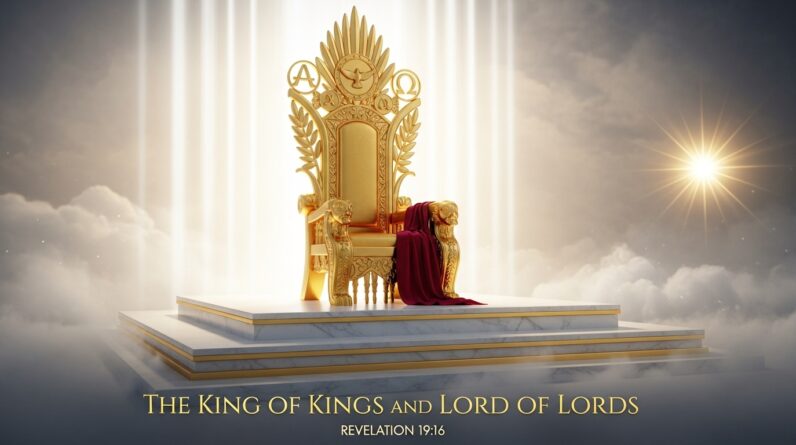Discover the powerful connection between biblical narratives and archaeological findings. Explore the world of biblical archaeology and uncover evidence supporting the historical accuracy of the Bible. Delve into the stories of ancient civilizations and witness the fascinating link between archaeology and the Bible. Journey through time and ignite your curiosity.
Have you ever wondered about the relationship between biblical stories and archaeological discoveries? In this insightful article, we explore the fascinating field of biblical archaeology and how it sheds light on the ancient narratives found in the Bible. Prepare to be amazed as we delve into the stories of ancient civilizations, uncovering evidence that supports the historical accuracy of biblical accounts. Get ready to embark on a journey through time and witness the powerful connection between archaeology and the Bible.
Introduction
In the realm of history and archaeology, exploring the connections between ancient texts and tangible evidence is a captivating endeavor. Biblical archaeology is a specialized field that aims to uncover and verify the historical accuracy of biblical narratives through the excavation and analysis of artifacts, ancient sites, and inscriptions. By examining the material remains of civilizations mentioned in the Bible, archaeologists can shed light on the lives, events, and cultures described within these sacred texts.
Biblical Archaeology
Definition and Overview
Biblical archaeology is the discipline that merges the principles of archaeology with the study of the biblical texts. It seeks to uncover physical evidence that illuminates the historical context of the Bible, providing valuable insights into the stories and events described within its pages. By examining pottery, architecture, inscriptions, and other artifacts related to biblical times, biblical archaeologists offer a tangible glimpse into the ancient world.
Importance and Objectives
The importance of biblical archaeology lies in its ability to provide historical context and factual evidence that supports the biblical narratives. While the Bible is primarily a religious text, it also serves as a historical record for ancient civilizations. By corroborating archaeological findings with biblical accounts, scholars can better understand how these ancient societies lived, interacted, and evolved.
The main objectives of biblical archaeology include the verification of biblical narratives, the reconstruction of biblical landscapes and civilizations, and understanding the cultural, social, and political contexts within which these events transpired. Through rigorous excavation, dating methods, and careful analysis, biblical archaeologists strive to uncover the truth behind the stories that have shaped religious and cultural traditions for millennia.
Methods in Biblical Archaeology
Excavation Techniques
One of the primary methods employed in biblical archaeology is excavation. Digging into ancient sites can provide a wealth of information about the people and societies that once inhabited those areas. Archaeologists excavate sites layer by layer, meticulously documenting and preserving each discovery. This process allows for the reconstruction of ancient structures, identification of artifacts, and the analysis of cultural and historical contexts.
Dating Methods
Accurately dating archaeological finds is crucial to establishing their relevance to biblical narratives. Biblical archaeologists utilize various dating methods, including radiocarbon dating, dendrochronology, and pottery analysis. These techniques enable them to determine the age of artifacts, structures, and even ancient texts. By aligning these chronologies with biblical timelines, scholars can identify correlations and further validate the historical accuracy of biblical events.
Analysis and Interpretation
Analyzing and interpreting archaeological finds is a crucial step in biblical archaeology. Specialists meticulously examine artifacts, inscriptions, and structures, seeking clues that shed light on the context and nature of ancient societies. Language experts decipher ancient scripts, while anthropologists and historians analyze pottery, tools, and other material remains. Through multidisciplinary collaboration, a comprehensive picture of the biblical world can emerge, allowing for a deeper understanding of biblical narratives.
Archaeological Findings Supporting Biblical Narratives
Old Testament Narratives
The Old Testament contains a rich collection of narratives, and numerous archaeological findings provide fascinating insights into the world described within. From the Exodus to the United Monarchy, these discoveries offer tangible links to the people, places, and events depicted in these ancient texts.
New Testament Narratives
The New Testament, the second part of the Christian biblical canon, presents narratives surrounding the life and teachings of Jesus, as well as the early Christian communities. Archaeological findings related to this period provide valuable context and understanding of the world in which these events occurred.
Old Testament Narratives
The Exodus
One of the most well-known narratives in the Old Testament is the story of the Exodus, the liberation of the Israelites from slavery in Egypt. While the biblical account offers vivid descriptions of the events, archaeological evidence supporting this story has been a subject of great interest.
Archaeological Evidence of Israelite Slavery in Egypt
Archaeological excavations in Egypt have revealed evidence of a group of people who lived and worked as slaves during the biblical period. The discovery of mud bricks with Hebrew names and depictions of Semitic slaves provides compelling evidence for the existence of an enslaved Hebrew population in Egypt.
Identification of Possible Routes
Exploring the possible routes taken by the Israelites during the Exodus has garnered considerable attention in biblical archaeology. By examining geographical and topographical features mentioned in the biblical account, scholars have proposed several plausible routes, such as the traditional route through the Sinai Peninsula or an alternate route along the Mediterranean coast.
The Conquest of Canaan
The Conquest of Canaan, led by Joshua after the death of Moses, marks a significant event in the Old Testament. Archaeological evidence regarding the destruction and settlement patterns in the region sheds light on the historical accuracy of this narrative.
Evidence of Destruction and Settlement Patterns
Excavations at various sites in Canaan have revealed architectural evidence of destruction consistent with the biblical account of conquest. Burnt layers, collapsed walls, and military fortifications provide tangible evidence of violent conflicts in the region during the narrative’s timeframe.
Cultural Continuity and Ethnicity
Examining the cultural continuity and changes in ethnicity can also contribute to our understanding of the Conquest of Canaan. Analysis of pottery styles, architectural motifs, and burial practices can help identify transitions between Canaanite cultures and the emerging Israelite presence, providing additional support for the biblical narrative.
The United Monarchy
The establishment and reign of the United Monarchy under King David and his successor Solomon have been subjects of extensive study. Through archaeological investigations, scholars have made intriguing connections to this period in biblical history.
Identification of King David’s Capital
One of the most notable achievements in biblical archaeology was the identification of the ancient city of David in Jerusalem. Excavations in this area have unearthed structures, inscriptions, and artifacts that correspond to the timeframe of King David’s reign, providing compelling evidence of his existence and the centrality of Jerusalem in the United Monarchy.
Confirmation of Biblical Texts
Alongside the archaeological discoveries related to the United Monarchy, scholars have found inscriptions and artifacts that mention biblical figures and places. The Tel Dan Stele, for example, contains a reference to the “House of David,” reinforcing the presence of a historical figure who led the Israelite nation.
New Testament Narratives
Life and Ministry of Jesus
The New Testament narratives surrounding the life and teachings of Jesus provide a unique set of challenges and opportunities for biblical archaeologists. While physical evidence directly linking to Jesus’ life is scarce, excavations in the region have illuminated the cultural and historical context in which Jesus lived and preached.
The Apostles and Early Christian Communities
Archaeological expeditions have uncovered evidence of early Christian communities and the apostles’ activities in various locations mentioned in the New Testament. Ancient churches, baptismal pools, and inscriptions referencing early Christian gatherings provide insights into the spread and development of the early church.
Conclusion
Biblical archaeology offers an exciting journey through time, intertwining faith, history, and archaeology. The discipline provides an opportunity to explore the biblical narratives within their historical context, revealing tangible links to the people, places, and events described in the Bible. From the Exodus to the United Monarchy, archaeological findings continue to support and enhance our understanding of these ancient texts. By delving into the material remains of the past, biblical archaeology bridges the gap between faith and history, enriching our knowledge of the biblical world and its enduring impact.








